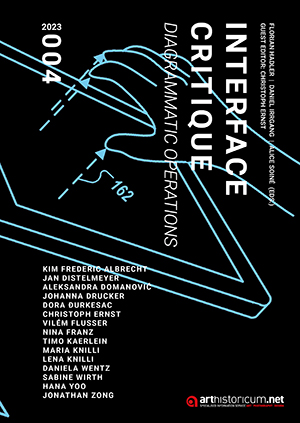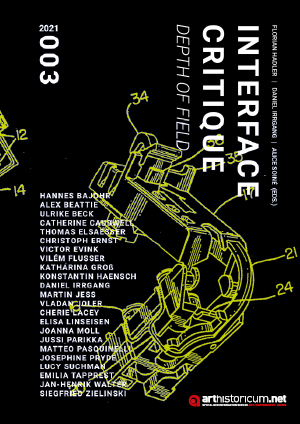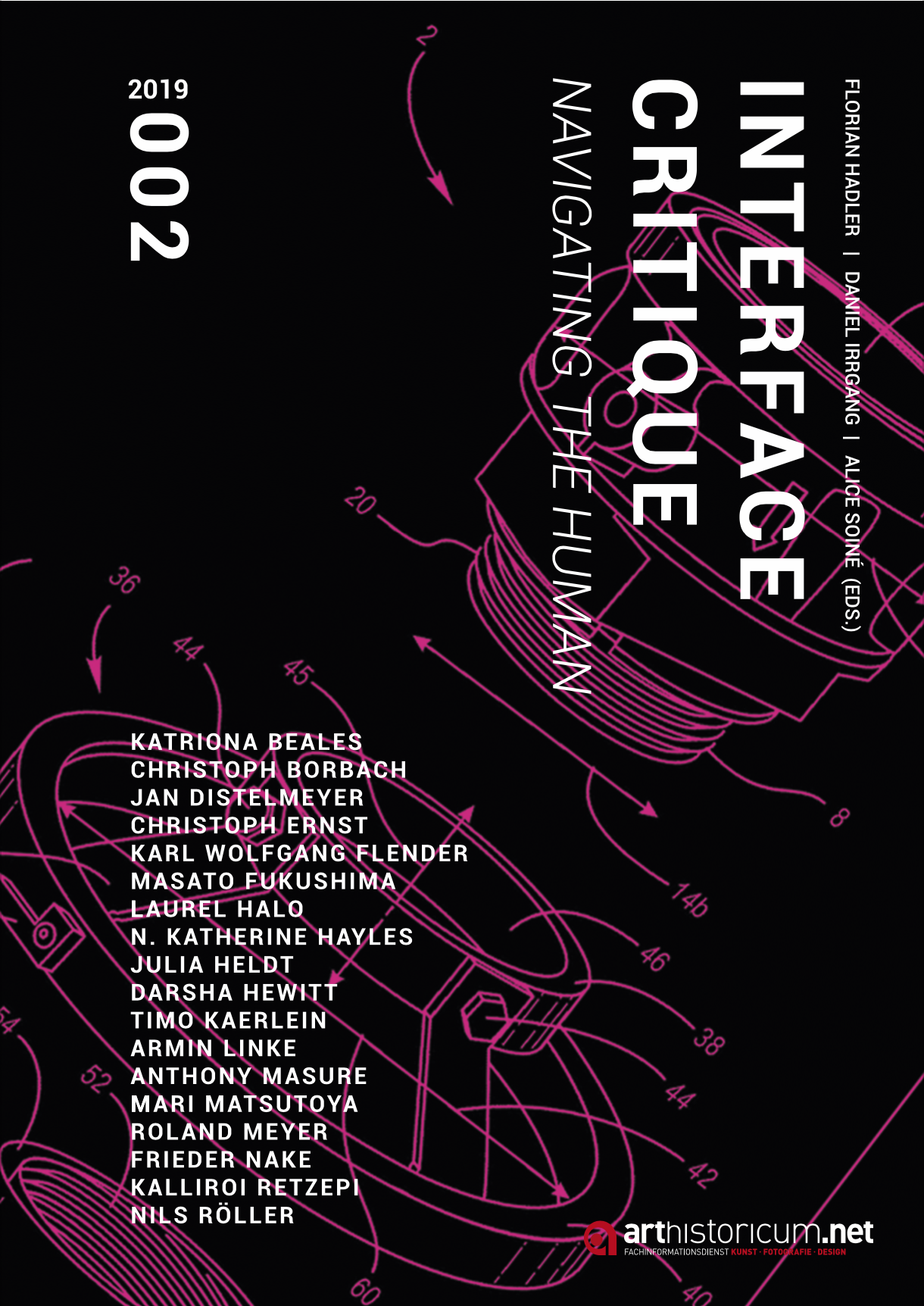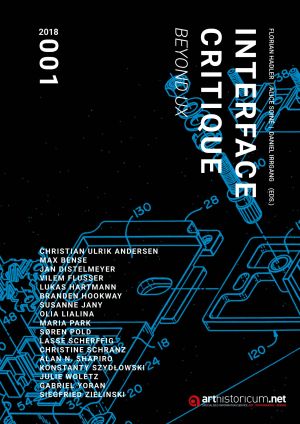Archiv

Conversing the Book
Bd. 5 (2025)
Der Fokus dieser Ausgabe von Interface Critique liegt auf dem Widerspruch zu einem Konzept des Interface als bloße Schwelle zu einer dematerialisierten Datenwelt. Um dies zu tun, beginnen wir jedoch nicht mit dem „Desktop“, sondern mit einem grundlegenden Objekt, das auf seiner Oberfläche liegt: dem Buch. Innerhalb der Geisteswissenschaften nimmt das Buch einen tief historisch verankerten Platz als eines der wichtigsten Objekte und Produkte ihrer Forschung ein. Es ist die Schnittstelle für den Austausch zwischen Autor*innen und Leser*innen, der Umgestalter fesselnder mündlicher Erzählungen in geschriebene fesselnde Geschichten, der Transformator von Gesprächen in Aufzeichnungen und Skripte. Zugleich ist, wenn die Materialität des Buches in den Vordergrund rückt, die Metapher des „Buchlesens“ auch wörtlich zu verstehen – der Text ist ebenfalls in seinem physischen Ursprung ansässig und nicht davon trennbar. Ein Text ist kein dematerialisiertes Wesen, er ist nicht purer Inhalt, sondern untrennbar mit seiner Form verbunden; ein Text befindet sich an der Schnittstelle zwischen Inhalt und Form.
Die Beiträge dieses Hefts erkunden umfassend, wie das Interface zwischen Körpern und Texten digital revolutioniert wurden, von der Auseinandersetzung von Forscher*innen mit antiker arabischer Literatur und griechischer Philosophie vermittels Manuskripte bis hin zur Auseinandersetzung von einkommensschwachen Menschen mit öffentlicher Infrastruktur durch jene Informationen, die auf Lebensmittelmarken im heutigen Indien verzeichnet sind. Sie zeigen, wie die digitale Transformation von Texten von analogen zu digitalen Formaten Zugangsmodi bedingt und somit verkörperte Erfahrungen und – im Gegenzug – die Form-Inhalt-Beziehung von Texten selbst transformiert.

Diagrammatic Operations
Nr. 4 (2023)
The fields diagrammatics and interface studies have long been seen as related. Given the fact that diagrammatics is the study of the epistemic properties of materially inscribed externalized signs, which are well known for – but not limited to – their use in information visu- alization, the connection between the two fields is easy to understand. Take for example the well-known class of graphical user interfaces (GUI). A GUI relies on semiotic elements that are spatially distributed according to inter- relations they signify. Such elements constitute as visual interfaces an “operational space” (“Operationsraum”) in a medium (e.g., a touchscreen). According to this notion, the interactive visual space of a GUI can be treated as a diagrammatic configuration. As such it is part of a certain “form of relation” between users and computers that has been considered typical for an interface.

Depth of Field
Nr. 3 (2021)
The terminological strength of the film and photography concept “depth of field” can be applied as a powerful leitmotif to think about interfaces. How can we think about and focus on the depth of the interface? Where and how can we find or create new and surprising relations between the surface and its depth? How can we render visible the numerous layers that are hidden behind and inside the interface?

Navigating the Human
Nr. 2 (2019)
OUT NOW: Interface Critique Journal no. 2 – Navigating the Human
Print available here (€29,90): BUCHHANDEL
“What kinds of conceptual and artistic frameworks will help us understand the implications of our participation in the hybrid human-technical systems that have become essential to contemporary life in developed countries?” This question raised by N. Katherine Hayles is not only central for her own current work, in which she offers a glimpse in her contribution to the new issue of Interface Critique. It also reflects a main aspect of the issue’s focus: Calling up on the hybridity or interdependency of humans and technology, it criticizes tech ideologies and Californian Narratives which share a premise of “human engineering” – to refer to a term already used in 1965 by K. F. Hywel Murrell, one of the founders of research in human-machine ergonomics.
From this perspective, current buzz words such as behavioural programming or persuasive technology uncover the powerful bias of research and development in ICT: its assumption that human behaviour in technological settings is something to be designed. The critical examination of such a concept of the human – as yet another systemic component – is the focus of this issue, Navigating the Human. Rather than to be integrated as an element in functionalistic interface paradigms, the human factor in technology may be conceptualised as resistant moments of subjectification. Since questions of subjective resistance are especially raised by contemporary critical artistic practice, this issue of Interface Critique also includes artistic contributions beyond classical scientific paper formats. They are accompanied by contributions from media, art and cultural studies, philosophy, digital humanities or design theory, among other fields.
With contributions by Katriona Beales, Christoph Borbach, Filipa Cordeiro, Jan Distelmeyer, Christoph Ernst, Karl Wolfgang Flender, Masato Fukushima, Laurel Halo, N. Katherine Hayles, Julia Heldt, Darsha Hewitt, Timo Kaerlein, Armin Linke, Anthony Masure, Mari Matsutoya, Roland Meyer, Frieder Nake, Kalli Retzepi, Nils Röller and William Tunstall-Pedoe.

BEYOND UX
Nr. 1 (2018)
This first issue tackles the versatility of the interface in five preliminary and deeply interlinked sections:
PROGRAMMATIC, where approaches for the analysis and production of interfaces are developed.
GENEALOGIES, where the histories, origins and predecessors of current interfaces are investigated.
PHILOSOPHIES, where conceptual and metaphysical assumptions of informatics and the interface are discussed.
PROJECTS, where concrete engineering and artistic practices engaging with interfaces are presented.
POLITICS, where the social relevance and implications of interfaces are highlighted.


